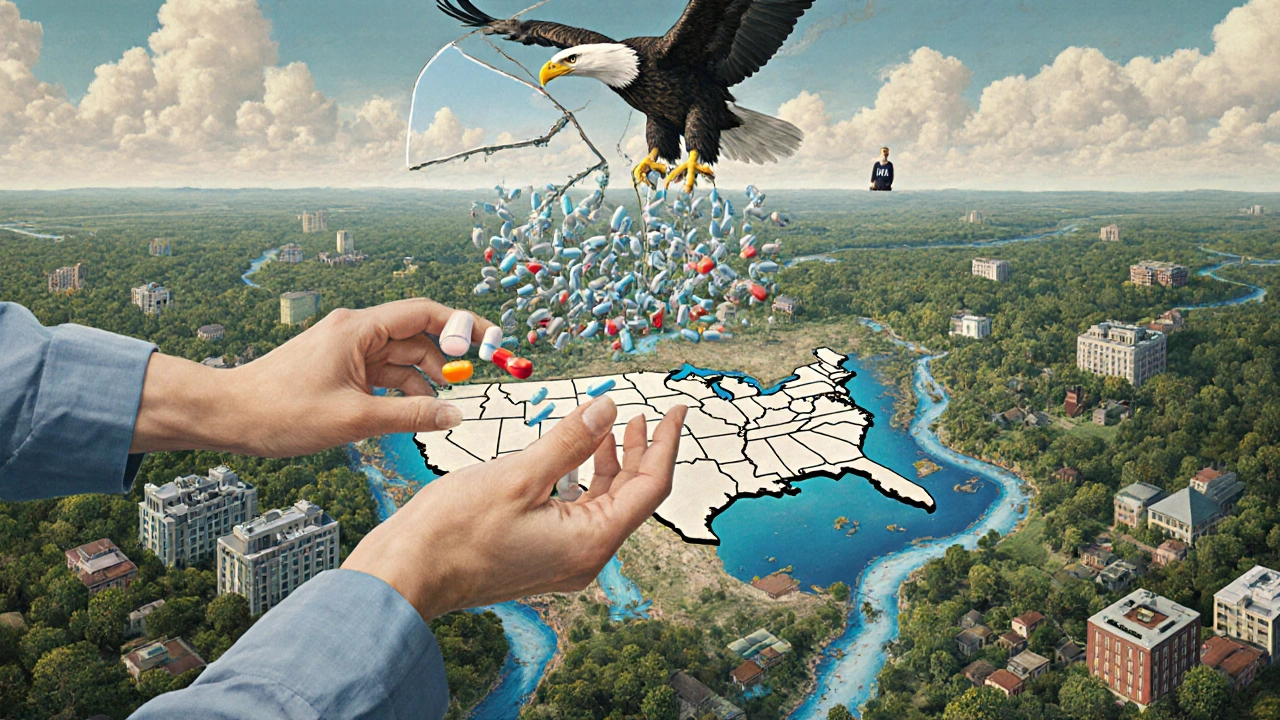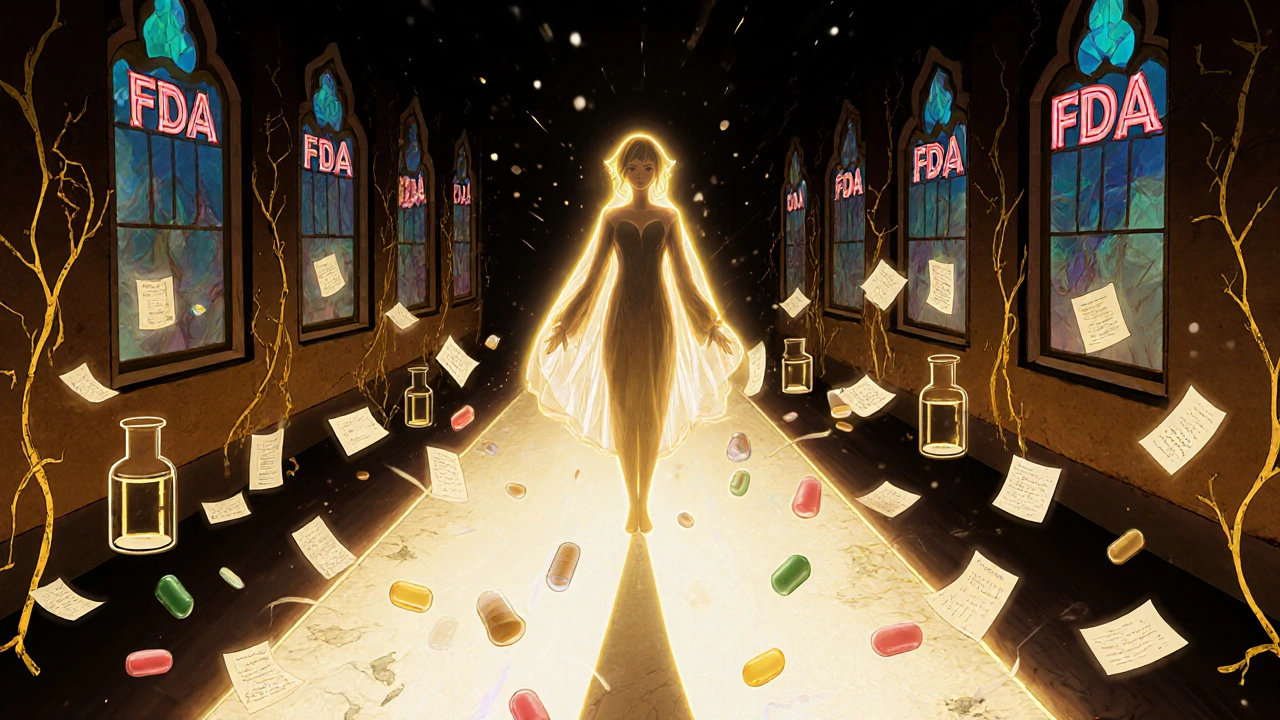The Hatch-Waxman Act didn’t just change how drugs are approved in the U.S.-it rewrote the rules of the entire pharmaceutical market. Before 1984, getting a generic drug to patients was a slow, expensive, and often impossible process. Brand-name companies held near-total control, and patients paid far more for medicines that were chemically identical to what was already on the market. The Hatch-Waxman Act, officially called the Drug Price Competition and Patent Term Restoration Act of 1984, fixed that. It created a legal bridge between innovation and affordability, making generic drugs not just possible, but common.
What the Hatch-Waxman Act Actually Did
The law was a compromise, not a victory for one side. Brand-name drugmakers wanted more time to profit from their patents. Generic manufacturers wanted a clear, fast path to market. Congress listened to both and built a system that rewarded innovation while forcing competition.
At its core, the Act created the Abbreviated New Drug Application, or ANDA. Before this, any company wanting to make a copy of a drug had to prove it was safe and effective from scratch-just like the original maker. That meant clinical trials, animal studies, years of work, and millions in costs. The ANDA changed that. Generic companies only needed to show their version was bioequivalent-that it released the same amount of medicine into the bloodstream at the same rate as the brand-name drug. No need to repeat expensive trials. That cut development costs by about 75%.
But here’s the catch: what if the brand-name drug was still under patent? That’s where the Act’s genius lay. It created a legal shield. Section 271(e)(1) of the patent code says it’s not infringement to make or test a patented drug if the only goal is to get FDA approval. This is called the “safe harbor.” Before Hatch-Waxman, the Supreme Court had ruled in Roche v. Bolar that even testing a drug during its patent term was illegal. Hatch-Waxman reversed that. Generic companies could now start preparing years before the patent expired-sometimes up to five years-without fear of being sued.
Patent Term Restoration: Why Brand Companies Got Something Too
Why would brand-name companies agree to this? Because the Act gave them something back: patent term restoration. Developing a new drug takes years. The FDA approval process alone can take 7 to 10 years. That eats up a big chunk of a drug’s 20-year patent life. By the time a drug hits the market, it might have only 8 years of exclusivity left.
Hatch-Waxman lets innovators apply to extend their patent by up to 14 years-but only for the time lost during FDA review. The average extension? Just 2.6 years. That doesn’t sound like much, but it matters. It gives companies a chance to recoup R&D costs before generics arrive. Without this, many drugs might never have been developed in the first place. The Congressional Budget Office estimates this balance helped bring over 1,000 new drugs to market between 1984 and 2018.
The Paragraph IV Gamble: How Generics Challenge Patents
One of the most powerful-and controversial-parts of the Act is the Paragraph IV certification. When a generic company files an ANDA, it must check the FDA’s “Orange Book,” which lists all patents tied to the brand-name drug. If the generic believes a patent is invalid or won’t be infringed, it can file a Paragraph IV notice. That’s a legal challenge.
Once filed, the brand-name company has 45 days to sue. If they do, the FDA is legally required to delay approval for 30 months. That’s a long time. But here’s the incentive: the first generic to file a successful Paragraph IV gets 180 days of exclusive marketing rights. No other generic can enter the market during that time. That’s a massive financial prize. In the late 1990s and early 2000s, companies would literally camp outside FDA offices, waiting to be the first to submit.
But this system has been abused. Some brand companies now file dozens of patents on minor changes-like a new pill shape, a different coating, or a slightly altered dosing schedule. These are called “secondary patents.” They don’t make the drug better, but they create legal roadblocks. Between 1984 and 2016, the average number of patents per drug jumped from 1.5 to 2.7. By 2020, some drugs had over 14 patents listed in the Orange Book. That’s a patent thicket-a maze designed to delay generics.

How the System Changed the Market
The results are undeniable. In 1984, fewer than 10 generic drugs were approved each year. In 2019, the FDA approved 771. Today, 90% of all prescriptions in the U.S. are filled with generics. Yet generics make up only about 18% of total drug spending. That’s how powerful competition is. The FTC says once a generic enters the market, prices drop to about 15% of the brand-name price within six months.
That’s saved the U.S. healthcare system over $1.18 trillion between 1991 and 2011, according to the Congressional Budget Office. In 2022 alone, generics saved $313 billion. The generic drug market grew from $1 billion in 1984 to $117 billion in 2022. The top 10 generic manufacturers now control 62% of the market-up from 38% in 2000. The system worked… until it didn’t.
The Dark Side: Pay-for-Delay and Product Hopping
But the Act’s design also created loopholes. One of the worst is “pay-for-delay.” Instead of fighting in court, some brand companies pay generic makers to delay their entry. Between 2005 and 2012, about 10% of all Paragraph IV challenges ended in these settlements. The FTC called them anti-competitive. In 2013, the Supreme Court ruled they could be illegal-but they didn’t stop. In 2023, the House passed the Preserve Access to Affordable Generics and Biosimilars Act to ban them outright.
Then there’s “product hopping.” A brand company makes a tiny change to its drug-a new tablet form, a new delivery device-and then pushes doctors and patients to switch. The old version is taken off the market. The new version gets a fresh patent. Generics can’t copy it until the new patent expires. This tactic has been used on drugs for epilepsy, schizophrenia, and even ADHD. It doesn’t improve outcomes-it just delays competition.
Another problem: access to samples. Brand companies can refuse to sell samples of their drug to generic makers, making it impossible to test bioequivalence. In 2022, Congress passed the CREATES Act to fix this. Now, brand companies must provide samples or face penalties.

Who’s Winning and Who’s Losing Today?
Generic manufacturers say the system is broken. Legal costs for a single Paragraph IV challenge now average $15 to $30 million. It takes 24 to 36 months to prepare an ANDA. The FDA still rejects 43% of initial submissions because of errors. One regulatory manager on Reddit said for blockbuster drugs, the 180-day exclusivity window is meaningless when there are 50+ patents to fight through.
Brand companies argue they’re under siege. Patent litigation has increased from 1.2 challenges per drug in 1984 to 4.3 today. They say the system is now so complex that innovation is being stifled. A Pfizer attorney testified in 2019 that the average time from Paragraph IV filing to generic entry had stretched from 28 months to 42 months.
But the real winners? Patients. And the healthcare system. Even with all the games, the U.S. gets generic drugs faster than Europe-on average, 1.8 years sooner after patent expiration. And prices stay lower. In countries without a Hatch-Waxman-style system, generic entry can take years longer.
What’s Next for Generic Drugs?
The FDA is trying to fix the system. Under GDUFA IV, it aims to cut ANDA review times from 10 months to 8 months by 2025. It’s also cracking down on improper patent listings. In 2022, it released draft guidance to stop companies from listing patents that don’t actually cover the drug’s use.
Some states are stepping in. California and New York have passed laws to limit product hopping. The FTC has identified 262 cases since 2010 where drug monopolies were extended illegally through patent abuse-mostly in oncology, neurology, and immunology.
Will the Hatch-Waxman Act survive? Most experts say yes. The core idea-balancing innovation with access-still works. But it needs updates. The 180-day exclusivity window needs reform. Patent thickets need tighter rules. Pay-for-delay needs a full ban. The FDA’s tools are getting stronger. The courts are watching. And patients are demanding lower prices.
The Hatch-Waxman Act didn’t just make generics possible. It made them inevitable. And as long as people need affordable medicine, that balance will remain the foundation of U.S. drug policy-even if it’s constantly being tested.


The Hatch-Waxman Act is one of those rare laws that actually worked the way it was supposed to. I grew up in India where generics were the only option, and seeing how this law created a system that balanced innovation and access is honestly inspiring. It’s not perfect, but it’s the closest thing we’ve got to healthcare justice in pharma.
One thing people don’t talk enough about is how the ANDA process saved countless lives by making insulin, blood pressure meds, and antibiotics affordable. I work in a clinic and see patients choosing between rent and their prescriptions every day. This law didn’t just change the market-it changed survival rates.
Wow, so we’re all supposed to clap for Big Pharma now? This law’s a joke. Patent thickets? Pay-for-delay? The whole thing’s rigged.
Let’s be real nobody gives a shit about bioequivalence studies the real story is how generic manufacturers turned this into a legal loophole casino where the house always wins and patients pay the price in delayed access and inflated prices from the first mover monopoly
As someone who’s reviewed ANDAs for 12 years I can tell you the FDA rejection rate isn’t because companies are sloppy-it’s because brand companies file 15 patents on a single pill and the generics have to fight them all. The system’s not broken it’s just been gamed into paralysis.
The Paragraph IV certification mechanism is a brilliant yet perilous instrument in the pharmacoeconomic ecosystem-it incentivizes early market entry through patent challenges but simultaneously engenders litigation arbitrage that distorts the temporal dynamics of therapeutic access. The CREATES Act was a necessary corrective, though insufficient.
I’ve seen this play out in the UK-we have no Hatch-Waxman equivalent, and it takes *years* for generics to arrive. The US system, flaws and all, is still the gold standard for getting cheap medicine to people fast. Sure, there’s abuse-but without this framework, we’d be stuck in the 1970s.
And yet here we are in 2025 and the FDA still takes 10 months to approve a generic? Come on. We’ve got AI that can predict protein folding but can’t speed up a drug approval? Fix the backlog or admit the system’s broken. Patients aren’t waiting.